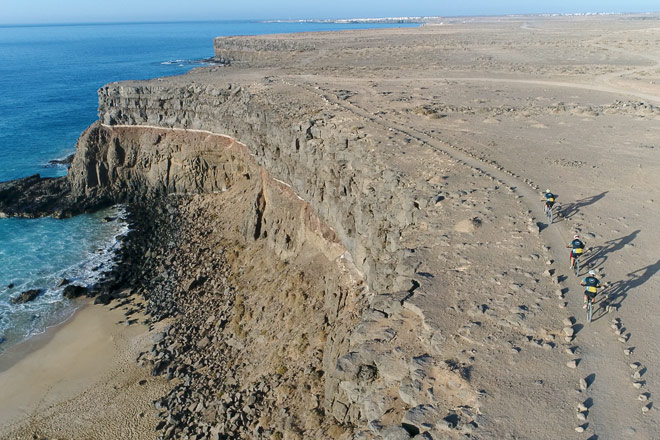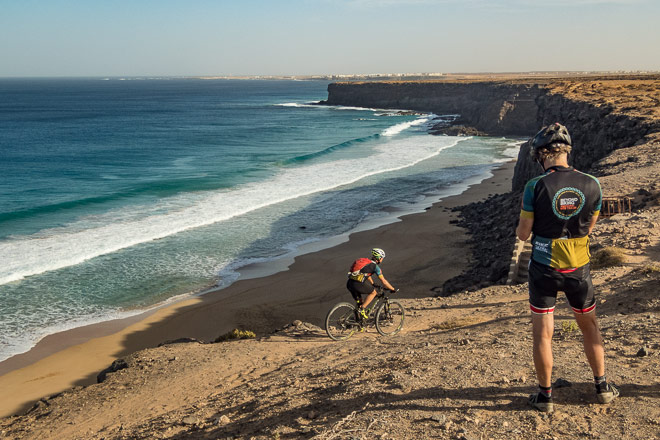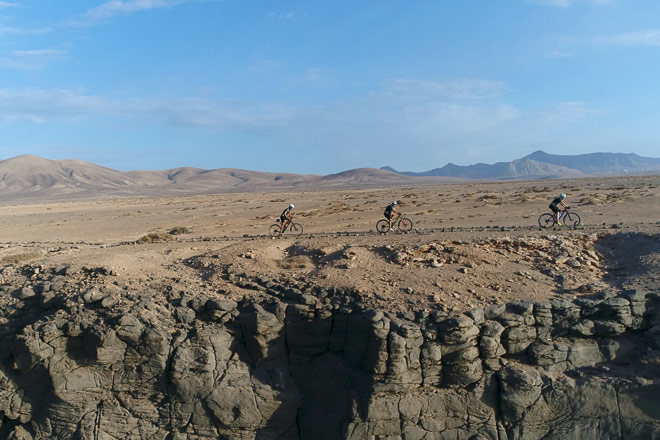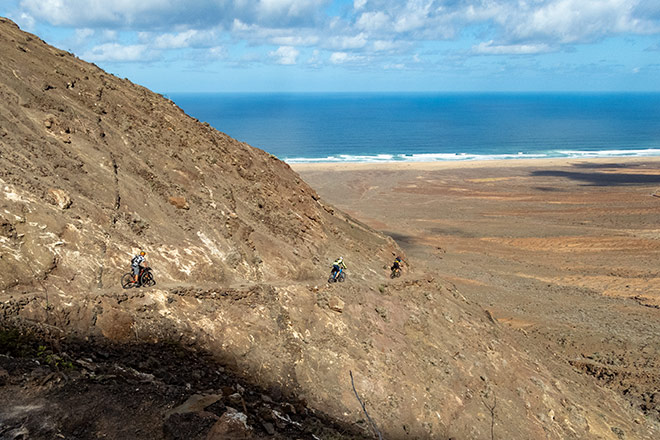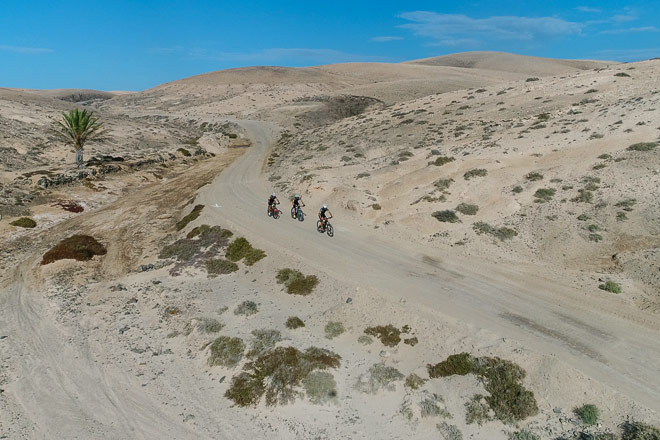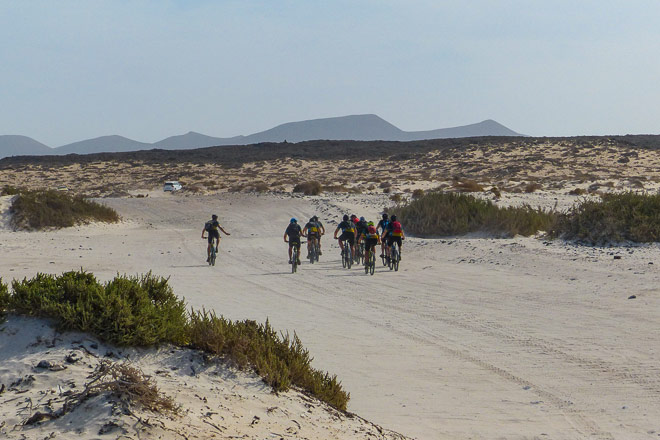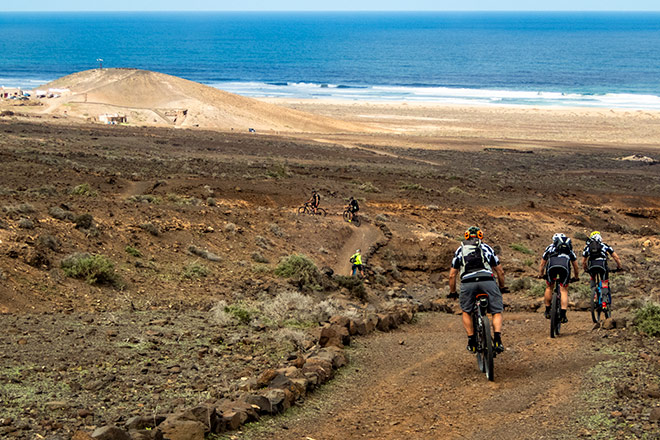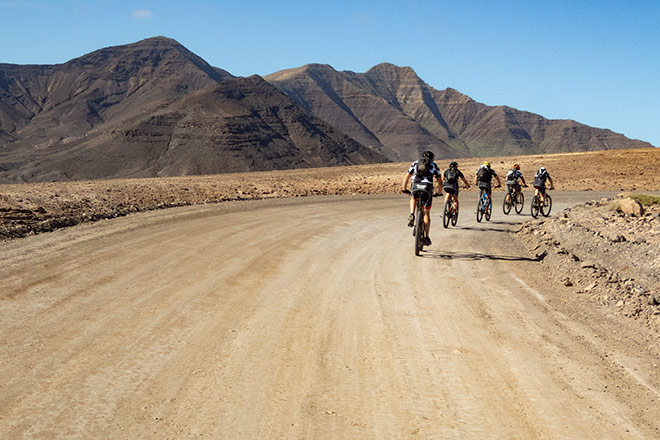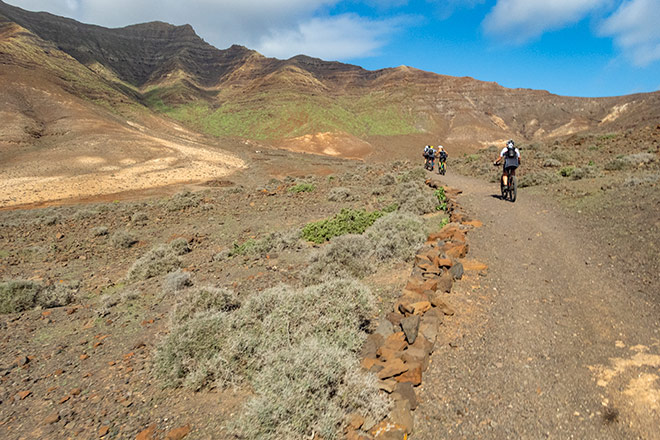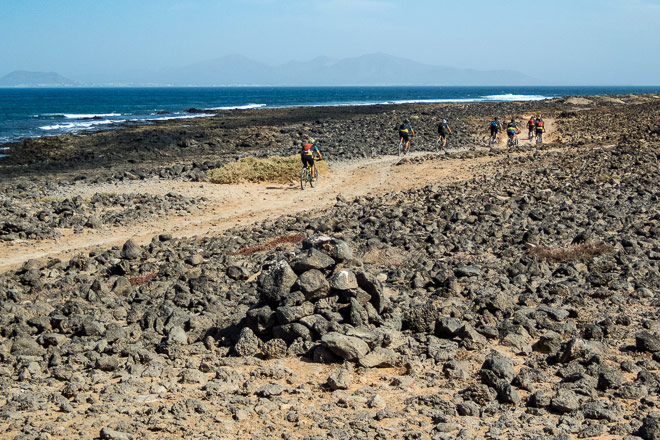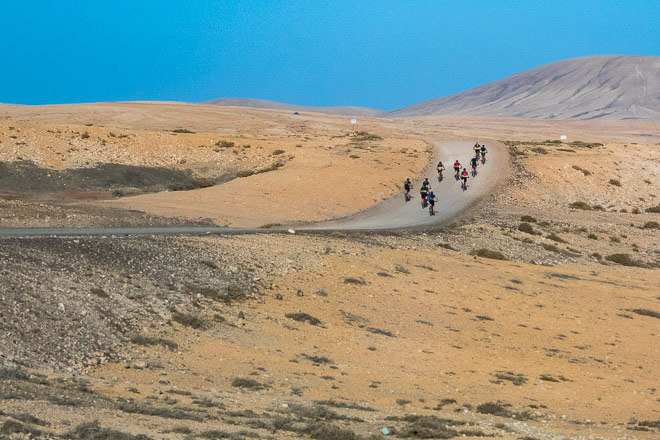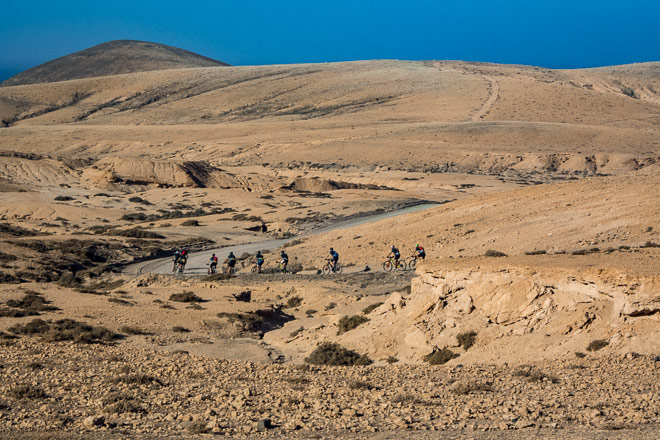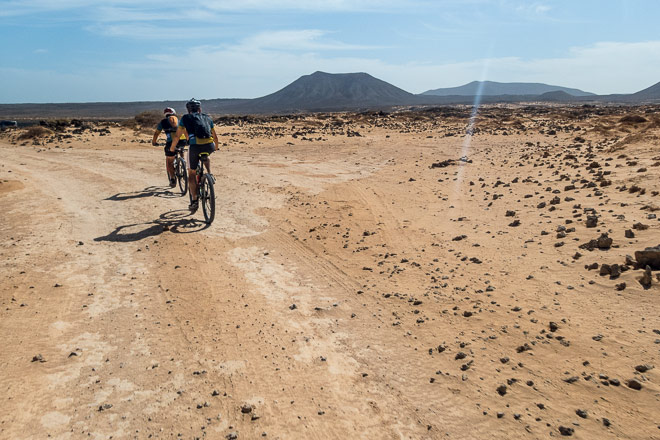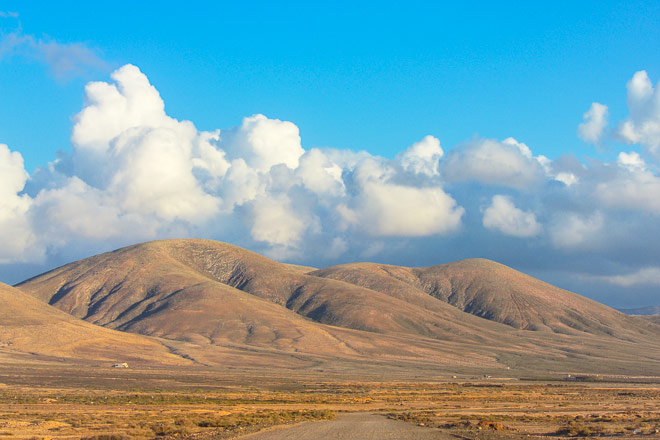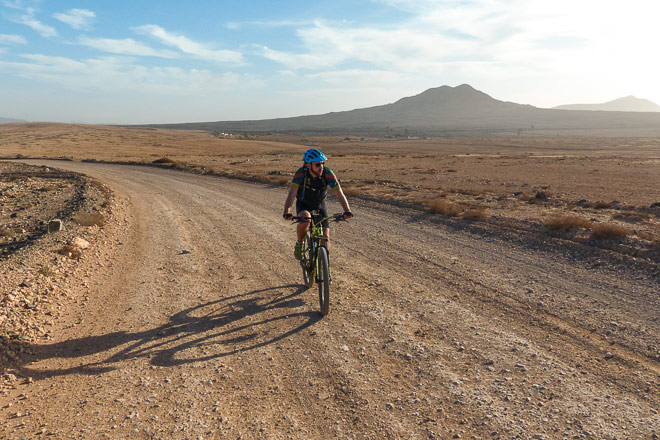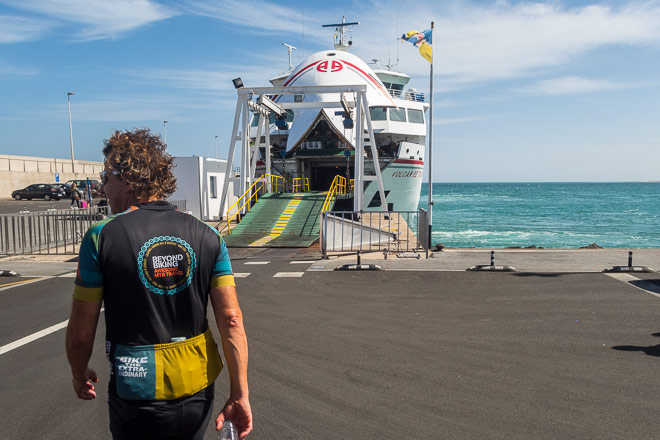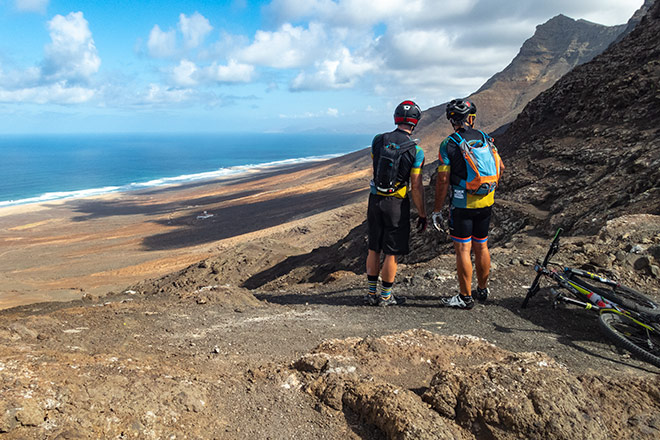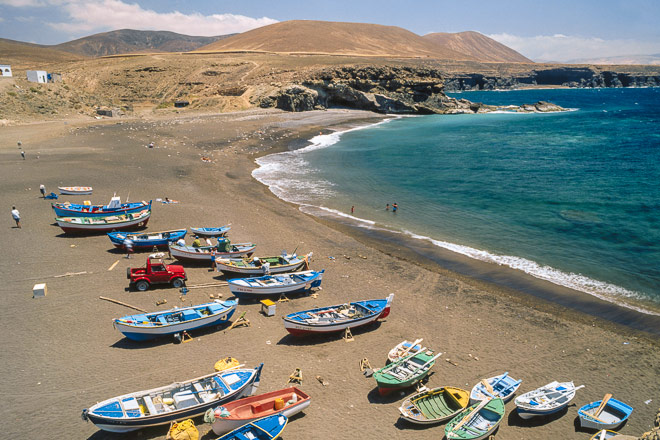“Mountain biking in Fuerteventura is a revelation,” says bike magazine Grinta which describes the island as “beautiful, ever-changing and suprisingly untouched by mass tourism."
PICTURE THE JOURNEY
The trail
Fuerteventura lies just 100km from the Moroccan coast, and there are striking similarities with the African landscape: never-ending golden sand dunes bathed by a turquoise sea beside an ochre cliff landscape. In other ways, Fuerteventura emulates its neighbour Lanzarote, only with more colours. Its volcanoes resemble piles of saffron, chilli and coriander, towering over the landscape like surreal triangles of exotic spices.Fuerteventra’s coastline also offers some off the best watersports in Europe. Kite and windsurfing is big business here. For tourists, mountain biking still feels fairly ‘new’ on Fuerte – although locals have been doing it years. Inevitably numerous mountain bike events are being organised every year. One of the most popular is FUDENAS, which takes riders over 150km from Corralejo in the very north of the island to Morro Jable all the way down to the south of the island.
Also heading from north to south, your first day biking in Fuerte will give you a bit of a taste of everything the island has to offer: you will cross the Corralejo National Park, a huge expanse of rolling sand dunes; you will bike along the chain of volcanoes from Corralejo to Lajares; you’ll do some great coastal biking on the west coast around El Cotillo surfer’s beach and Ayuy; and you’ll drag your bike away from the shoreline and explore centuries-old villages untouched by time, like Betancuria, a pretty hamlet tucked into basalt hills.
Your second day in Fuerte will be as unforgettable as the first. Some of the island’s bays – such as the Península de Jandía – are held in such high regard that they’ve been given natural park status. You will climb the Jandia chain, west of Morro Jable until the Jandía Cape, at the southernmost point of the island, where strong sea currents crash and the ocean is always a great show. Following that, you will head on to the stunning remote beach of Cofete. Once back in Morro Jable, those who are very fit can tackle the Pico de la Zarza – at 870m, it is the highest mountain on Fuerteventura.
Riding surface
The track surface is changeable: you ride over everything from gravel to dirt track to soft sandy trails, hard rocky trails and a bit of tarmac for good measure. Apart for some rocky sections (mostly canyons taking you to the beach), the trails are not technical. If you like solitude, and don’t mind a bit of wind, it’s a great place to ride.As the name Fuerteventura loosely translates as “strong winds”, you can’t say you haven’t been warned. It does get very windy at times, but frankly, this is more of a blessing than a curse, keeping you cool even when the sun is at its fiercest.
Average mileage
Fuerteventura is the flattest of all the Canary Islands, but still, you will tackle long-stretched climbs. The first stage in the north, heading from Corralejo to Pajara is 70km with 900 metres of elevation gain. The day after, on the circuit in Parque National Jandia, the average distance and elevation gain is similar. But this Beyond Biking tour is flexible – make it as long or as short as you like.


